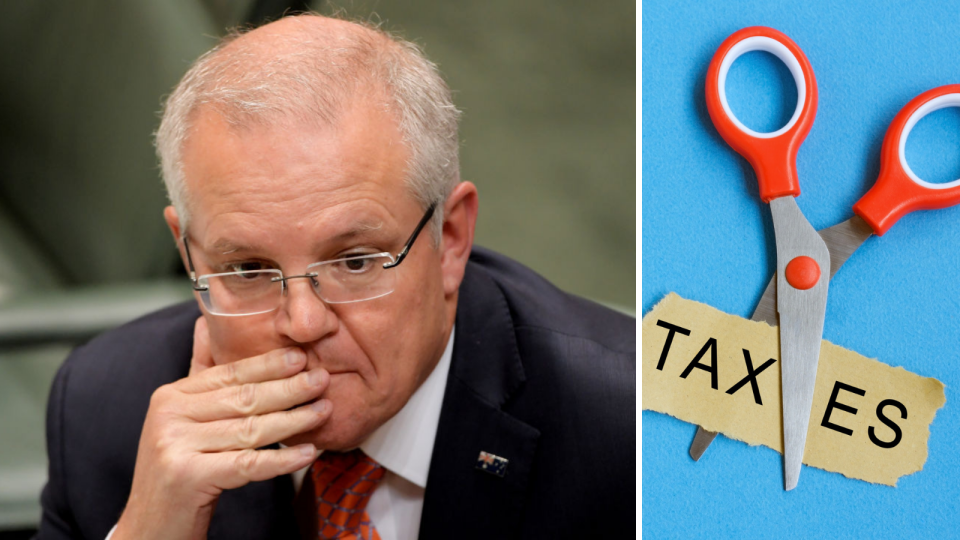Coalition’s income tax cuts: What’s coming up next?

The Federal Government’s $158 billion income tax cut plan is most likely set to become law, with crossbench senators Cory Bernardi and Jacqui Lambie confirming they would vote for the three-phase package in the Senate later today.
That means those of us earning up to $126,000 can expect up to $1,080 in tax offsets (from the original maximum payment of $530) in our pockets in this year’s 2018-19 tax return.
That’s stage one.
Related article: $1,080 tax cuts set to become law
Related article: What the Coalition win REALLY means for your taxes
Related article: All the laws that are changing on 1 July: Here’s what it means for you
Stage two will come into effect in 2022-23, and will see the 19 per cent tax rate expanded to include those earning up to $45,000, rather than $41,000. It will also see the low income tax offset increased from $445 to $645.
Stage three will come into effect 2024-25, and will increase the 32.5 per cent personal income tax bracket from $120,000 to $200,000, which means the 37 per cent personal tax bracket would be eliminated. It would also increase the threshold of the top tax bracket (45 per cent) from $180,001 to $200,001.
All three stages were already legislated, so even before Lambie committed to supporting the Coalition’s package, taxpayers earning up to $126,000 were set to receive a bonus when they lodged their tax returns for the 2018-19 financial year.
Politicians are now voting on the figures behind those initiatives, which are: boosting the cost of stage one by $14 billion; increasing the cost of stage two by $45 billion; and tripling the cost of stage three to $95 billion.
What’s the deal with stage three?
Stage three will see the tax rate of the $45,001-$200,000 tax bracket fall from 32.5 per cent to 30 per cent.
This sounds like good news for workers, but the cost of reducing the tax rate by 2.5 per cent would (according to the government) cost $95 billion over the next 10 years.
On top of that, the beneficiaries of stage three are really only high income taxpayers.
In 2024-25, when stage three first comes into effect, almost a third of the benefit goes to the top 10 per cent of tax payers, and the top 20 per cent will get more than half the benefit, according to the Australian Institute.
Down at the other end, the bottom 10 per cent of taxpayers will get no benefit at all, and the bottom 20 per cent gets less than 1 per cent of it.
Does the Labor Party agree with the income tax cuts?
The Labor party have said they would pass the $1,080 income tax offset (stage one).
Looking at stage two, Labor’s stance at the last election was to keep with the traditional method of discussing tax cuts over the budget forward estimates – which looks at the next four years – which means it’s unclear whether they’ll remove stage two or leave it in place.
And they’ve strongly opposed stage three because it disproportionately benefits high income taxpayers. On top of that, it won’t come into effect for another six years, so they don’t see the urgency in passing it right now.
Where will that $95 billion come from?
There’s a big question mark over whether this bill is affordable, but the government says the budget numbers point to a decade of surpluses, even with the tax cuts.
But while there’s talks that revenue will be drawn from health or education, AMP economist, Shane Oliver, told Yahoo Finance that $95 billion will come from the higher tax revenue.
“I do think they’re [the income tax cuts] affordable,” Oliver said.
“They’re also appropriate.”
All stage three will do, Oliver says, is adjust the tax bracket creep.
What’s the tax bracket creep?
“If you don’t increase the brackets through time as wages go up, then you end up with more and more ordinary Australians paying higher tax rates,” Oliver explained.
“If you go up with the average wage, you’ll find yourself in higher and higher tax brackets and, you’ll be paying more in tax.
“So, all they’re doing is trying to hand back bracket creep.”
Oliver says the current top bracket of $180,000 has been in place for over a decade, so it was probably time it changed.
Why the controversy then?
Figures from The New Daily suggest that if all three stages of the plan were enacted, the top 15 per cent of income earners would pay a lower share of their income in tax than they do now, but middle-income earners would pay a higher share of their income in tax.
According to their figures, those stage three cuts would make income tax at its least progressive since the 1950s.
But Oliver insists it’s just the nature of rising wage growth, and the politics around the issue are what makes it so hotly contested.
“People are worried because of the political nature of the debate – but it’s been so long since higher income earners have had their tax brackets changed.
“It depends on whether you focus on the percentage change or dollar change - for some it’s easy to focus on just the dollar change, which will see high income earners pay less in tax.
“The reality is, come 2024-25 there’ll be a lot of people paying top tax rates for someone it was never intended for.”
Make your money work with Yahoo Finance’s daily newsletter. Sign up here and stay on top of the latest money, news and tech news.

 Yahoo Finance
Yahoo Finance 